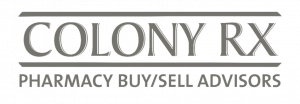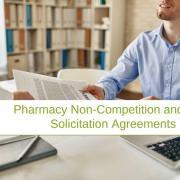The 20 Key Sections In a Pharmacy Purchase Agreement
Sell Your PharmacyBy Colony RX
When you sell a pharmacy, the buyer and seller will execute a comprehensive asset purchase agreement (“APA”) which is negotiated between them. Generally speaking, the purpose of the asset purchase agreement is to document what is being purchased, what is being paid, and clarify who is responsible for what both before and after the sale.
Each pharmacy purchase agreement is different, and is worked on by the seller’s and buyer’s respective lawyers. At a very high level, here are 20 key sections in every pharmacy asset purchase agreement:
- Identifying the Parties: The legal name of the pharmacy seller’s corporation and pharmacy buyer’s corporation are identified.
- Recitals: Here, the parties state their general intent, which is that the pharmacy seller and pharmacy buyer desire to enter into an agreement to sell the assets of the pharmacy, and that the pharmacy will continue to operate as usual until the transaction is closed.
- Included and Excluded Assets: This section spells out which assets and liabilities are included and excluded in the pharmacy sale.
- Purchase Price: This section details what the purchase price is, what it is for, and how and when it will be paid.
- Allocation of Purchase Price: This describes how the purchase price will be allocated between the different assets.
- Inventory Value. This section describes the inventory that will be bought, and how it will be valued. For example, damaged, spoiled or expired pharmacy inventory will not be purchased.
- Representation and Warranties of the Seller. These are the promises the seller makes to the buyer. These include:
- The pharmacy selling the assets has the ability to sell the assets. For example, there is no court order or shareholder preventing the sale of the assets.
- Any contracts that the seller will assume are valid contracts.
- The pharmacy is not involved in any lawsuits and is operating in compliance with all laws.
- The seller has proper insurance in place.
- There is nobody who needs to give permission for the seller to sell the pharmacy.
- Seller has filed all required tax returns.
- Seller confirms all financial statements are valid.
- Seller confirms that nothing has changed since they showed it to the buyer.
- The assets of the pharmacy are in good operating condition and repair.
- The records of the pharmacy are true and complete.
- The seller has all necessary licenses and permits to operate the pharmacy.
- The pharmacy software is generally working and in good condition.
- Seller has fully and proactively disclosed all material things to the buyer.
- The pharmacy has conducted proper billing practices.
- The lease is valid.
- Representation and Warranties of the Buyer: These are the promises the buyer makes to the seller. Most of these are the same as what the seller promises the buyer, but there are less promises because the seller relies on fewer promises than the buyer.
- Covenants of Seller: These are general promises that the pharmacy will continue to operate up to the closing date as it has before the closing date.
- Confidentiality: These are mutual promises to keep the terms of the transaction confidential.
- Employees: A section that confirms that all pharmacy employees are given employee contracts.
- Buyers/Sellers Conditions of Closing. These are things that must happen for the transaction to close, including that all previously made promises continue to be true; All documents have been delivered; The pharmacy continues to operate as usual; and the landlord and buyer have executed a lease.
- A section that confirms the that the seller will help the buyer obtain licenses and contracts needed to operate the pharmacy (e.g. BOP license). In addition, it references a power of attorney that allows the buyer can use the seller’s contracts and licenses until it has its own contracts and licenses.
- This section sets out the terms of the seller’s non-competition and non-solicitation agreements.
- The indemnification section promises the buyer that they will not be responsible for issues that arose before the sale, and the seller that they will not be responsible for issues that arose after the sale.
- The expenses section confirms that the Buyer and seller each pay their own expenses.
- The severability section confirms that if one section of the agreement is invalid, the rest of the agreement is still valid.
- The APA is the only agreement, and this section confirms that any “side agreements” are invalid.
- This section confirms that the agreement may be amended only if everyone agrees in writing.
- Last, the exhibits and schedules contains all of the documents associated with the purchase agreement, such as a copy of the lease.
As noted above, these are only some of the terms in a standard pharmacy purchase agreement. Each transaction is different, and each pharmacy agreement is customized to the specific transaction. This is why it’s important to have a great advisor who will help you achieve the best possible result for your goals. Give ColonyRX today if you would like to discuss any of these contractual terms, or anything else related to valuing, buying or selling pharmacies.









